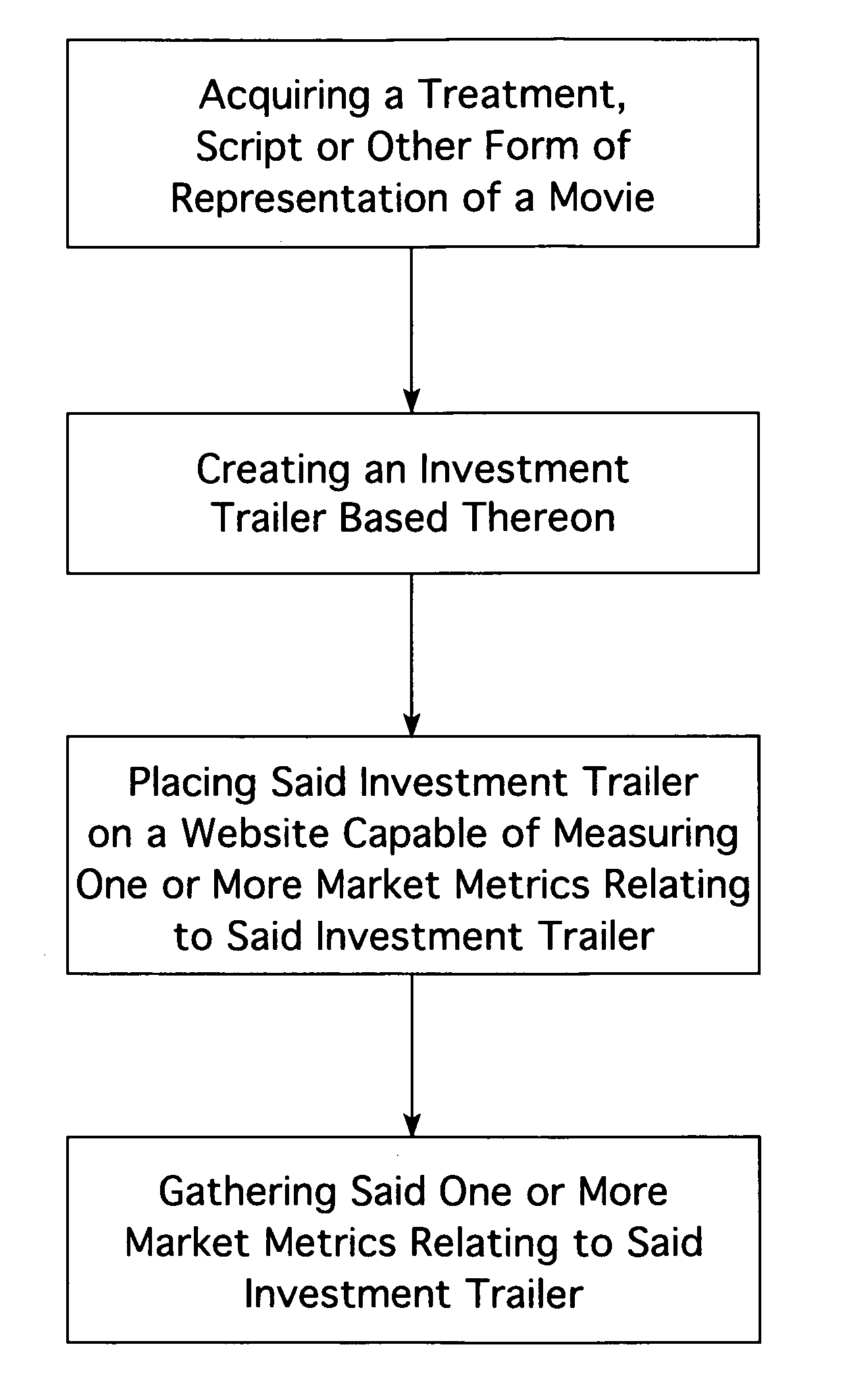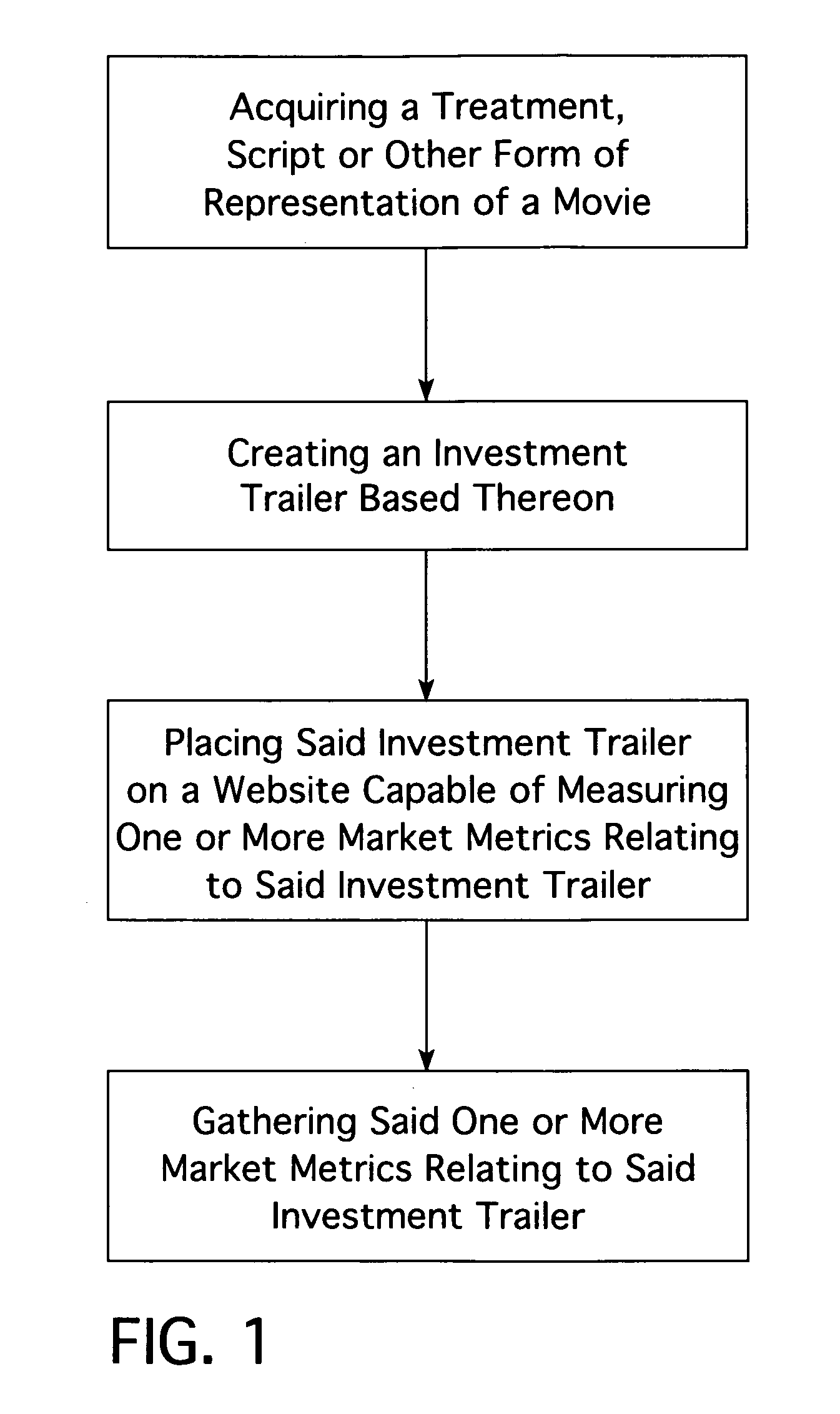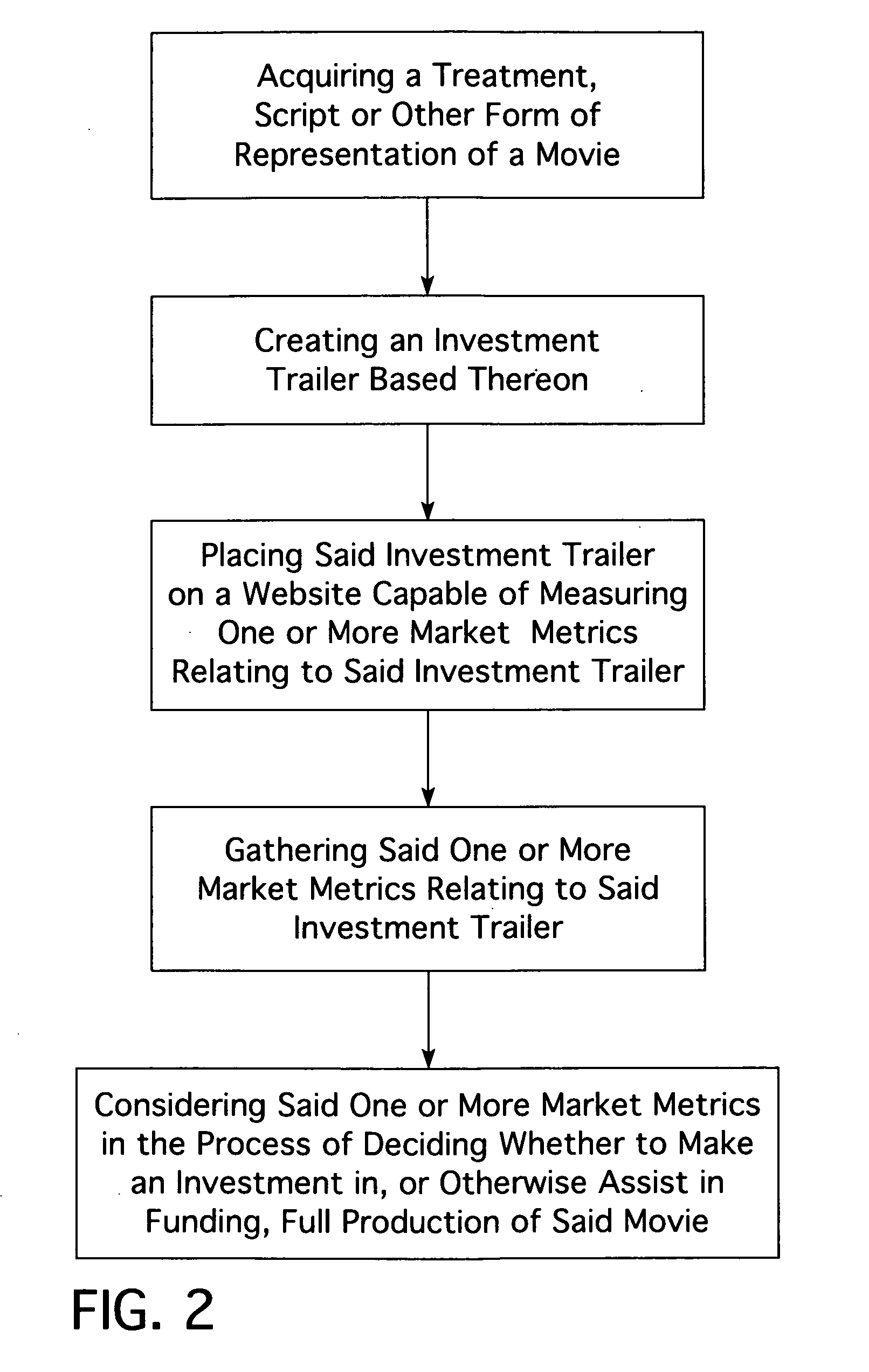Method for quantifying the relative value of movies prior to spending substantial amounts of money on full production thereof
a technology for determining movies, applied in the field of methods for quantifying the relative value of movies prior to spending substantial amounts of money on full production thereof, can solve the problems of reducing the quality of movies, so as to achieve high quality and high cost, the effect of high investment risk
- Summary
- Abstract
- Description
- Claims
- Application Information
AI Technical Summary
Benefits of technology
Problems solved by technology
Method used
Image
Examples
Embodiment Construction
[0021]Referring to FIG. 1, the flow chart tracks the language of claims 1. The first step is “acquiring a treatment, script or other form of representation of a movie.”“Treatments” and “scripts” are understood terms of art in the field of screenwriting and movie making. My invention can be used with a treatment, an actual script or any other form of representation of a movie (such as a book, a television show, etc.). The only requirement is that the treatment, script or other representation be specific enough to allow for the creation of the IT as a derivative work. “Acquiring” in this context means to get rights to, to get electronic or physical possession of, or to otherwise control the property to a degree that you can use it for purposes of creating the IT. The second step is “creating an investment trailer based thereon.” This refers to the investment trailer that is at the heart of this invention. An investment trailer as used herein means a digital, video or film work that is...
PUM
 Login to View More
Login to View More Abstract
Description
Claims
Application Information
 Login to View More
Login to View More - R&D
- Intellectual Property
- Life Sciences
- Materials
- Tech Scout
- Unparalleled Data Quality
- Higher Quality Content
- 60% Fewer Hallucinations
Browse by: Latest US Patents, China's latest patents, Technical Efficacy Thesaurus, Application Domain, Technology Topic, Popular Technical Reports.
© 2025 PatSnap. All rights reserved.Legal|Privacy policy|Modern Slavery Act Transparency Statement|Sitemap|About US| Contact US: help@patsnap.com



